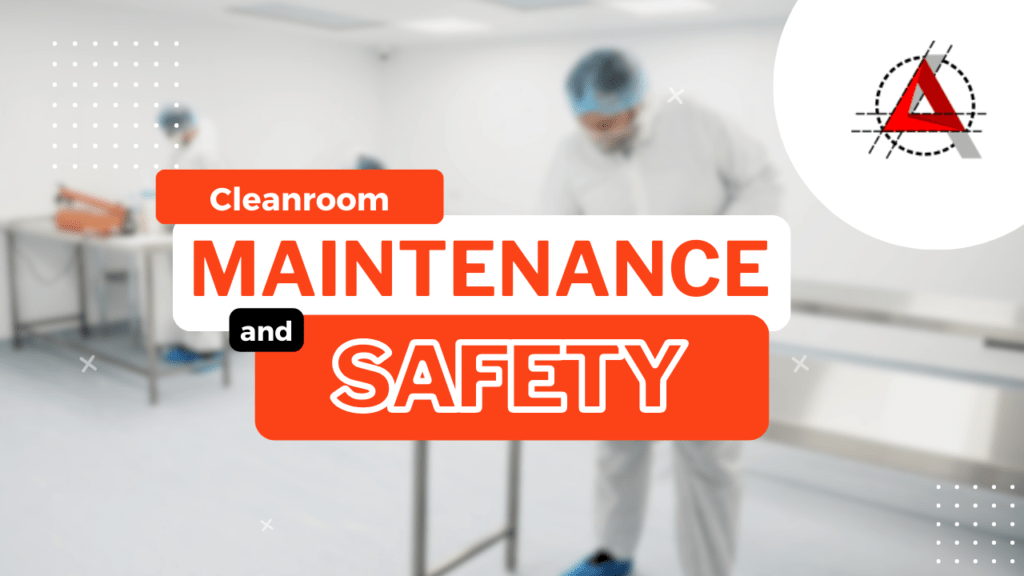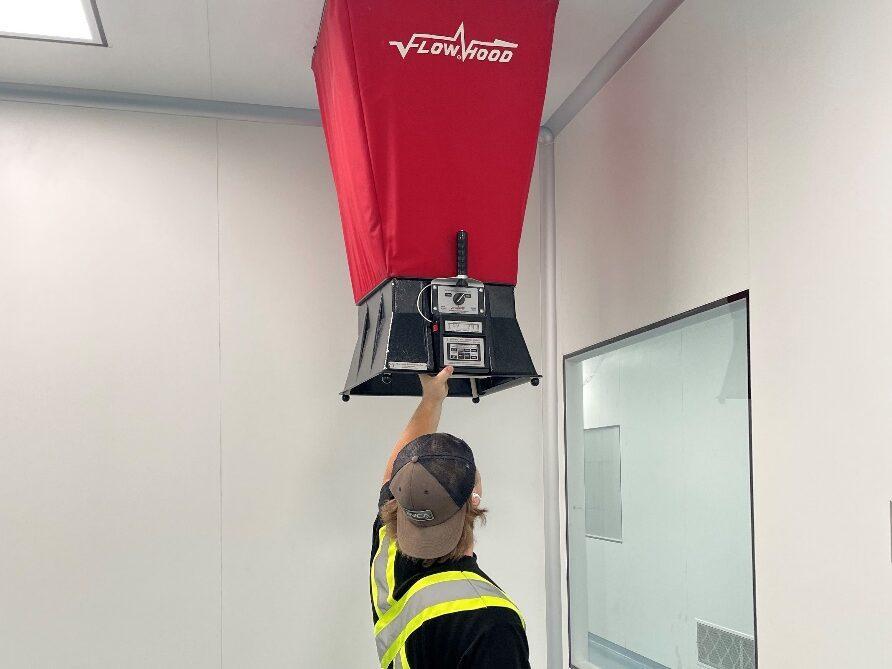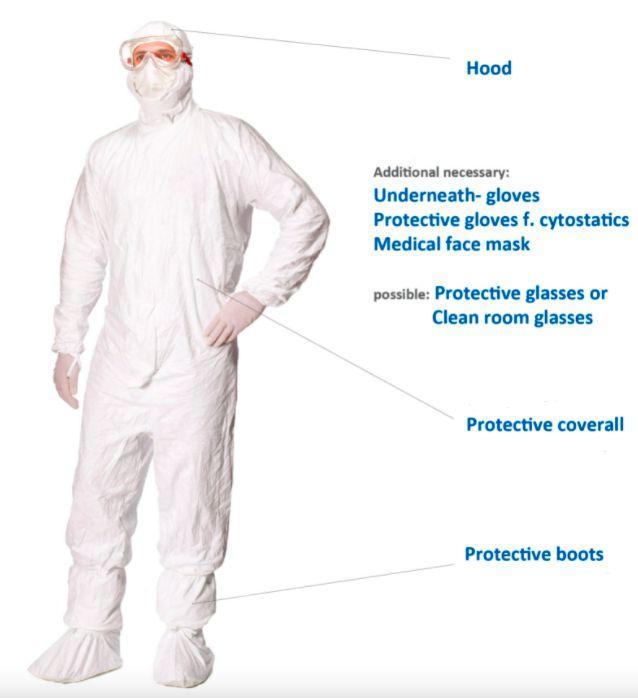Cleanroom Maintenance & Safety: Key Practices for Preserving Precision & Purity

Cleanrooms are vital environments used in industries where even the smallest trace of contamination can lead to significant consequences. To maintain the integrity of products, research, and operations, meticulous cleanroom maintenance is essential. In this blog, we will explore the significance of cleanroom maintenance, key practices to ensure optimal performance, and the benefits it brings to industries that rely on controlled and contaminant-free environments.
The Importance of Cleanroom Maintenance
Cleanroom maintenance is more than just routine cleaning; it is a comprehensive set of practices aimed at preserving the cleanliness and functionality of the controlled environment. Regular maintenance ensures adherence to stringent industry standards, minimizes risks of contamination, extends the life of equipment, and enhances overall operational efficiency. Properly maintained cleanrooms offer numerous benefits, including:
- Consistent Product Quality: In industries such as pharmaceuticals, electronics, and biotechnology, semiconductor cleanroom maintenance is crucial to avoid product defects and ensure consistently high-quality output.
- Research Integrity: For scientific research and development, maintaining a contamination-free environment is imperative to obtain accurate and reliable results.
- Regulatory Compliance: Many industries must comply with strict regulations and standards, making cleanroom maintenance an essential component of legal and regulatory compliance.
- Longevity of Equipment: Regular maintenance reduces wear and tear on equipment, increasing its lifespan and minimizing downtime due to malfunctions.
- Safety of Personnel: Cleanroom maintenance helps create a safe working environment for personnel by minimizing exposure to hazardous substances and ensuring proper functioning of safety systems.

Key Cleanroom Maintenance Practices
- Regular Cleaning and Disinfection: Implement a scheduled cleaning program using specialized cleaning agents and equipment appropriate for cleanroom environments. Surfaces, walls, floors, and equipment must be thoroughly cleaned and disinfected to eliminate contaminants.
- Air Filter Replacement: High-Efficiency Particulate Air (HEPA) and Ultra-Low Penetration Air (ULPA) filters play a crucial role in maintaining cleanroom air quality. Regularly replace filters according to the manufacturer’s recommendations to ensure optimal performance.
- Environmental Monitoring: Install monitoring systems for real-time assessment of particle counts, temperature, humidity, and pressure differentials. Continuous monitoring helps identify deviations and enables prompt corrective actions.
- Gowning and Personnel Training: Proper gowning procedures are essential to prevent personnel from introducing contaminants into the cleanroom. Regular training ensures that all staff understand the importance of cleanroom protocols.
- Equipment Calibration and Maintenance: Regularly calibrate and maintain cleanroom equipment to ensure accuracy and reliability. Follow the manufacturer’s guidelines for maintenance and calibration intervals.
- Controlled Access: Restrict access to authorized personnel only. Implement an entry and exit protocol to prevent uncontrolled contamination.
- Material Handling: Ensure that all materials entering the cleanroom are appropriately cleaned, inspected, and stored to prevent the introduction of contaminants.
- Contamination Control Plans: Develop comprehensive contamination control plans, outlining the various maintenance procedures, schedules, and responsibilities. Regularly review and update these plans as needed.

Cleanroom maintenance is an indispensable aspect of industries that require controlled environments to achieve their objectives. The commitment to cleanliness, precision, and purity ensures consistent product quality, regulatory compliance, and research integrity. By following key cleanroom maintenance practices, industries can reduce the risks of contamination, extend the life of equipment, and create a safer working environment for personnel.
In the fast-paced world of technological advancements and scientific breakthroughs, cleanroom maintenance remains a cornerstone of success for industries reliant on precision manufacturing, advanced research, and cutting-edge development. Embracing these best practices will not only protect investments in cleanroom facilities and equipment but also pave the way for continued growth, innovation, and excellence in a competitive global market.
Cleanroom Safety: Identifying Hazards and Implementing Mitigation Strategies
Cleanrooms are specialized environments designed to minimize contamination and ensure high-quality production in industries such as pharmaceuticals, biotechnology, electronics, semi-conductors, and aerospace. While cleanrooms are critical for product integrity, they can also pose unique safety challenges for workers. The common hazards found in cleanrooms and provide practical mitigation strategies to promote a safe working environment are as follows:

1. Particulate Contamination:
Hazard: Airborne particles can pose health risks to personnel and compromise product quality.
Mitigation:
- Regularly monitor and maintain air filtration systems.
- Use appropriate personal protective equipment (PPE) like gloves, gowns, and face masks.
- Implement proper gowning procedures to reduce particle shedding from workers.
2. Chemical Exposure:
Hazard: Working with chemicals in cleanrooms can lead to chemical spills or accidental exposure.
Mitigation:
- Store and handle chemicals in designated areas with proper ventilation.
- Train personnel in safe chemical handling procedures and emergency response protocols.
- Have readily available safety data sheets (SDS) for all chemicals used in the cleanroom.
3. Electrical Safety:
Hazard: Cleanroom equipment and instrumentation may lead to electrical hazards.
Mitigation:
- Regularly inspect and maintain electrical systems and equipment.
- Use grounded and certified equipment to minimize the risk of electrostatic discharge (ESD).
- Provide training on safe usage and handling of electrical devices.
4. Ergonomic Risks:
Hazard: Repetitive tasks and improper ergonomics can lead to musculoskeletal injuries.
Mitigation:
- Design workstations and equipment to promote ergonomic posture and reduce strain.
- Encourage regular breaks and stretching exercises for cleanroom personnel.
- Provide ergonomics training and awareness programs.
5. Slip and Fall Hazards:
Hazard: Cleanroom floors can become slippery due to spills or moisture.
Mitigation:
- Implement a regular cleaning schedule and promptly address spills.
- Use non-slip footwear and floor mats to minimize slip risks.
- Prominently display warning signs near wet floors or during cleaning activities.
6. Noise and Vibration:
Hazard: Some cleanroom equipment may generate excessive noise or vibrations.
Mitigation:
- Regularly inspect and maintain noisy equipment to minimize sound levels.
- Provide workers with hearing protection devices when necessary.
- Isolate vibrating machinery to reduce transmission to other parts of the cleanroom.
Cleanroom safety is of paramount importance to protect both personnel and the integrity of products manufactured in these controlled environments. By understanding the potential hazards and implementing effective mitigation strategies, cleanroom operators can create a safer and healthier work environment. Regular training, communication, and adherence to safety protocols are vital to ensuring the continued success of cleanroom operations while prioritizing the well-being of everyone involved.
Ready to take action and make a change? Don’t just stop here- let’s turn these insights into results! Whether you’re seeking clarity on cleanroom safety and maintenance or aiming to gain insights from experts, don’t hesitate to contact us at info@achengineering.com. Take action today and enhance the safety and efficiency of your cleanroom. Always keep in mind, the little strides we take now pave the way for remarkable accomplishments in the future. Together, we can turn this into a reality!
GET IN TOUCH
Complete the form below to get in touch with our team.
